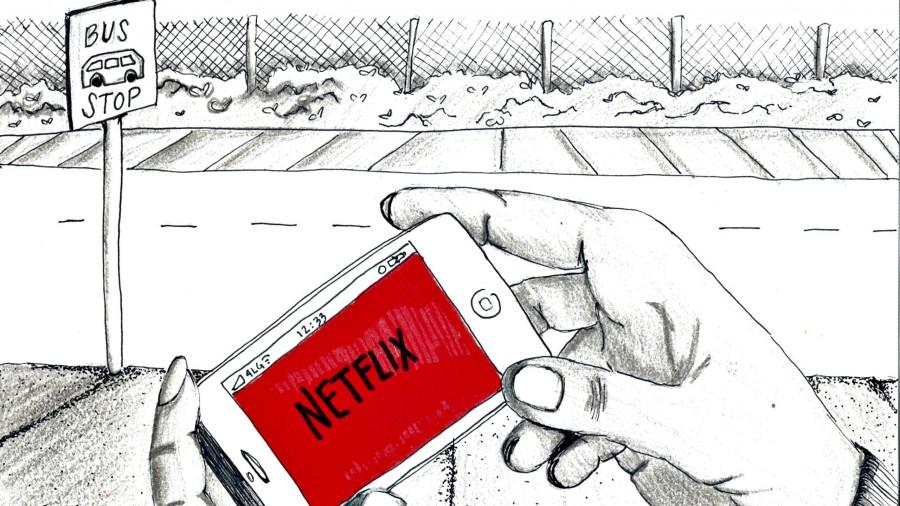Netflix Streaming Helps Define Modern Media Culture
Netflix and other streaming companies, such as Hulu Plus and Amazon Instant Video, are taking over and crushing the popularity of classic cable television. According to The Huffington Post, 40 percent of all American households with a television or Internet use one of the previously mentioned instant-video services. We live in a world where TV shows and movies are readily available to us on our computers, tablets, smartphones and more.
This raises the question: What kind of effect does instant Internet streaming have on consumers? Students? Families?
While some view instantly-accessible TV shows and movies as a negative change in cinematic entertainment culture, the shift simply provides consumers with an overall greater level of convenience.
Beside for the costs of Wi-Fi and an electronic device, internet streaming provides consumers with an extensive array of content for only eight to ten dollars per month. Although cable television includes a wider range of programs, including live news, sports and award shows, many consumers no longer think the price is worth the extra channels.
In recent years, cable companies have seen a decrease in their number of subscribers because many American households are switching over to Internet streaming completely. Since streaming services are now available through low-cost options, consumers need to weigh the costs and benefits of subscribing to cable TV, Internet streaming or both.
Those who view the new TV culture as a negative change point out that Internet-accessible movies and shows add to the list of distractions that students face while doing homework.
However, this addition to potential distractors is insignificant relative to the entirety of other distractors, which includes social media, texting, doodling and staring blankly at a wall. Students who are easily distracted from schoolwork will lose focus whether Netflix creates an easily-accessible option.
Opponents of the change in TV culture also argue that because kids can access TV on their devices, they resort to watching movies on a bright computer screen in their bedrooms, which creates distance within a family.
When a TV was the only source of cinematic entertainment in a household, siblings and families were generally pulled together in front of the TV when they wanted to watch. This is no longer the case. Streaming services provide individuals with the option of watching movies and shows by themselves in any location. While this is a valid concern, teenagers who sit in their bedrooms distant from their families need the space and quiet and will get it with or without online streaming services.
Fast-paced, busy lives make pressing the record button ahead of time a harder task than it may seem to be. Internet streaming may be especially convenient for the busiest of consumers since they do not need to worry about finding programs through the seemingly infinite channels of cable, and they may not always be in the comfort of their living rooms when they find time to watch. When busy people can find a bit of time to finally catch up on a show they love, they could be anywhere: in line for the bus, waiting to pick up their child or in the back of a boring class.
Aside from pure convenience, streaming services like Netflix have come out with numerous original programs which keep us involved in current TV culture. Netflix-available programs provide consumers with the latest shows to obsess over and talk about. These programs make up the new culture of television, and it is difficult not to be a part of it.
Besides several concerns about the accessibility of Internet streaming services, the fact is that consumers benefit overall from this change in TV culture. Of course, no one is forced to give up their cable service, but rather a new and more convenient option has been added to the world of entertainment. Internet streaming allows consumers to watch on any device, in any location and at any time, which so far is as convenient as it gets.



